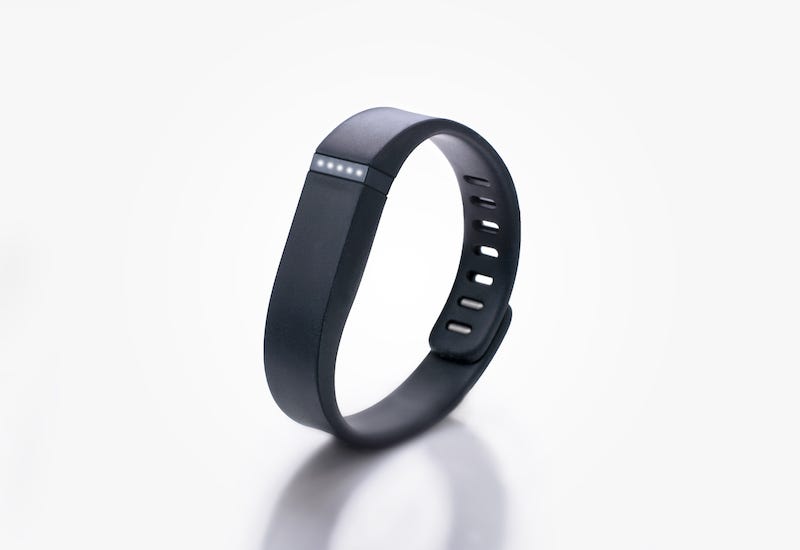By Matt Stout

Over the past few decades, people have become increasingly interested in tracking physical activity. Whether it is for health reasons, or merely to look and feel good, people have been seeking a more accurate way to track their physiological progress than a measly pedometer. They want to learn how to improve their day-to-day activities and eating habits, and to know more about their health. It was only in the past decade that fitness tracking devices made an enormous leap in capability and popularity, becoming a trendy commodity around the world.
One of the first major technological devices accessible to the general public was the Fitbit Tracker, released in 2008. The most recent iteration of this device allows you to not only count your steps, but also keep track of distance, time, and the amount of calories burned, all by simply attaching the device to your clothing or placing it in your pocket.
“[This device] will help us better understand athletic performance and physiological responses to exercise.” — Sam Emaminejad
s tracking devices developed, companies started looking for new designs. The Jawbone UP, released in 2011, was one of the first to implement a device you could wear on your wrist. This new device could keep track of activity intensity, detect your mood, and determine sleep time and quality. This allowed people to better examine their physical activity and helped enhance sleep schedules, which could lead to improved moods and overall better health.
These devices have continued to evolve, doing more to help the user track their fitness. One of the latest releases announced in 2015, the Jawbone UP4, has even more abilities than many thought possible in a wristband. With the app synced to a smart phone or device, you can log food, track your resting heart rate and passive heart rate, connect the device to an American Express credit card, and on top of all of that, the program has a “Smart Coach” that interprets all of the data you collect and gives you tips to improve your health and set personal goals.
With all of these capabilities at your fingertips, one would think there isn’t much else to improve. But, what if there was a way to non-invasively read the actual chemicals in your body, gaining access to an abundance of physiological information? This is a question that Dr. Ali Javey, a professor of Electrical Engineering and Computer Science at the University of California-Berkeley, set out to answer.
avey and his postdoctoral fellows, Wei Gao and Sam Emaminejad, are affiliated with the Berkeley Sensor and Actuator Center as well as the Materials Sciences Division at Lawrence Berkeley National Laboratory.
Javey and his team have developed a prototype fitness tracker that can be worn as a wristband or headband and analyzes the chemical makeup of sweat. There are two components to the design. The first is a flexible circuit board, containing 11 computer chips, which can be condensed into one chip when ready for production. This element reads and sends the data received from the second portion of the device: a flexible plastic piece containing sensors that gather information from the sweat. These sensors target four analytes: sodium, potassium, glucose, and lactate — three more chemicals than any other sweat-based biosensors.
By continuously monitoring these chemicals, we will be able to tap into a whole new array of physiological information. Sodium controls blood pressure and blood volume, while potassium has various bodily functions such as building proteins, breaking down carbohydrates, and muscle building. Monitoring these chemicals will grant access to dehydration levels. Glucose and lactate, which take part in the body’s energy levels, can give information on muscle fatigue. With this kind of information being read from a device on your wrist or perhaps a headband, athletes would have a revolutionary way to train and keep constant track of their health.
While helping athletes train more efficiently is a great development, this innovative device has the potential to do much more. Its ability to monitor sweat could allow us to assess medical conditions, discern drug abuse (prescription or otherwise), and possibly even detect molecules linked to depression. Emaminejad said in an interview with a Berkeley news reporter that, “The number of biochemicals we target can also be ramped up so we can measure a lot of things at once. That makes large-scale clinical studies possible, which will help us better understand athletic performance and physiological responses to exercise.” This could potentially lead to the reading of hormones, diseases, and numerous other illnesses.
With such great potential, this newfangled device could have massive contributions not only to the world of athletics and fitness tracking, but also to medical analysis and applications. Incorporated with the already expansive capabilities of fitness trackers like the Jawbone UP4, this product would change the definition of athletic training and personal health entirely.
